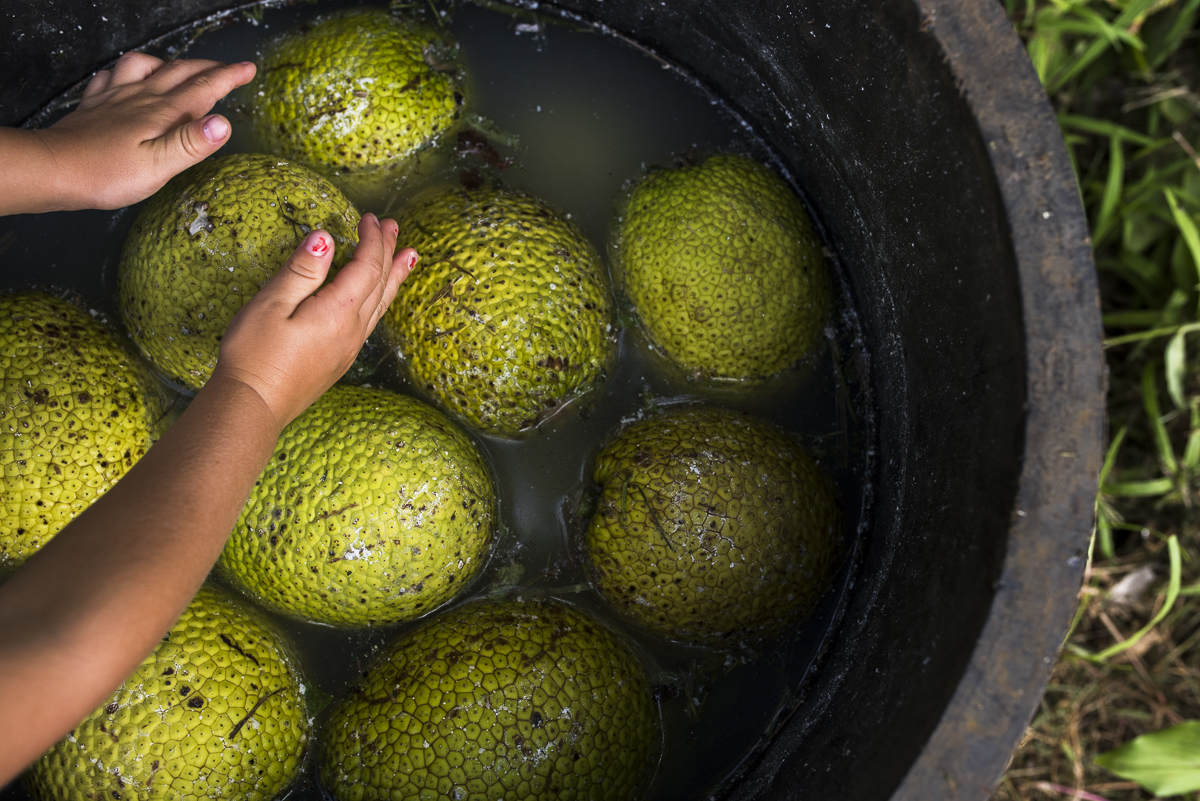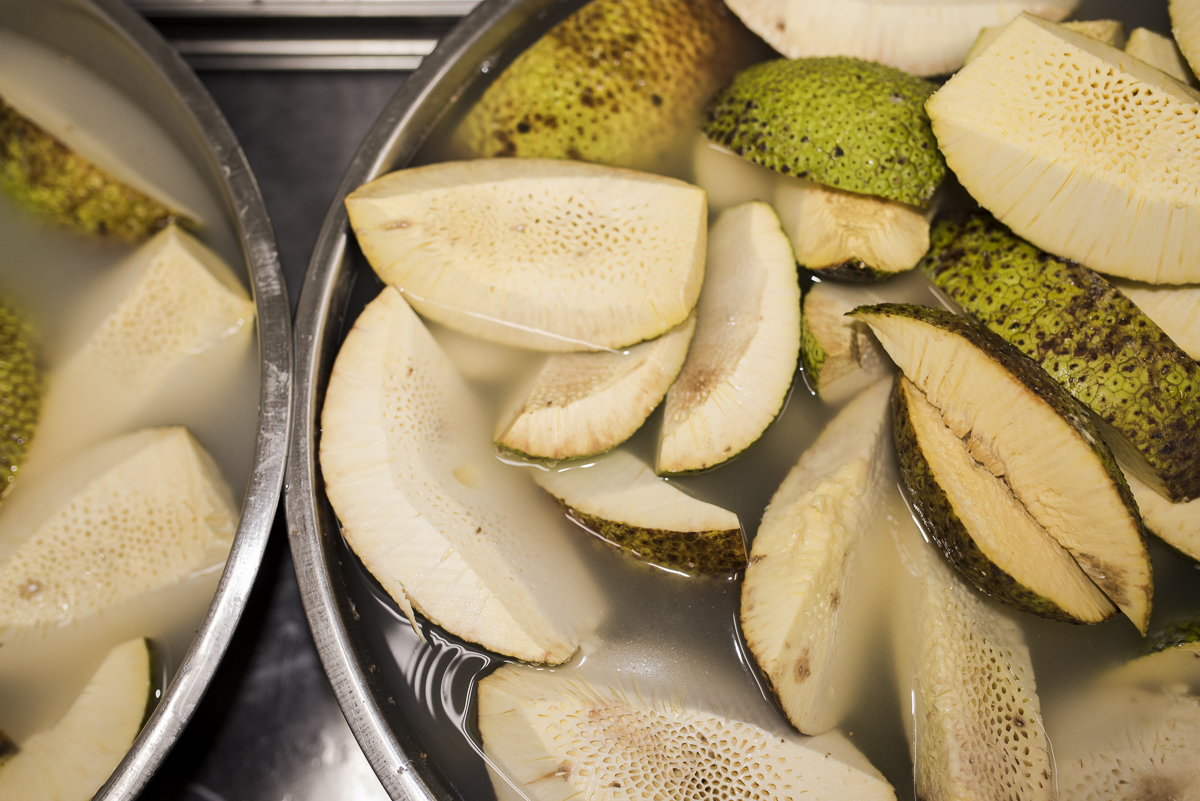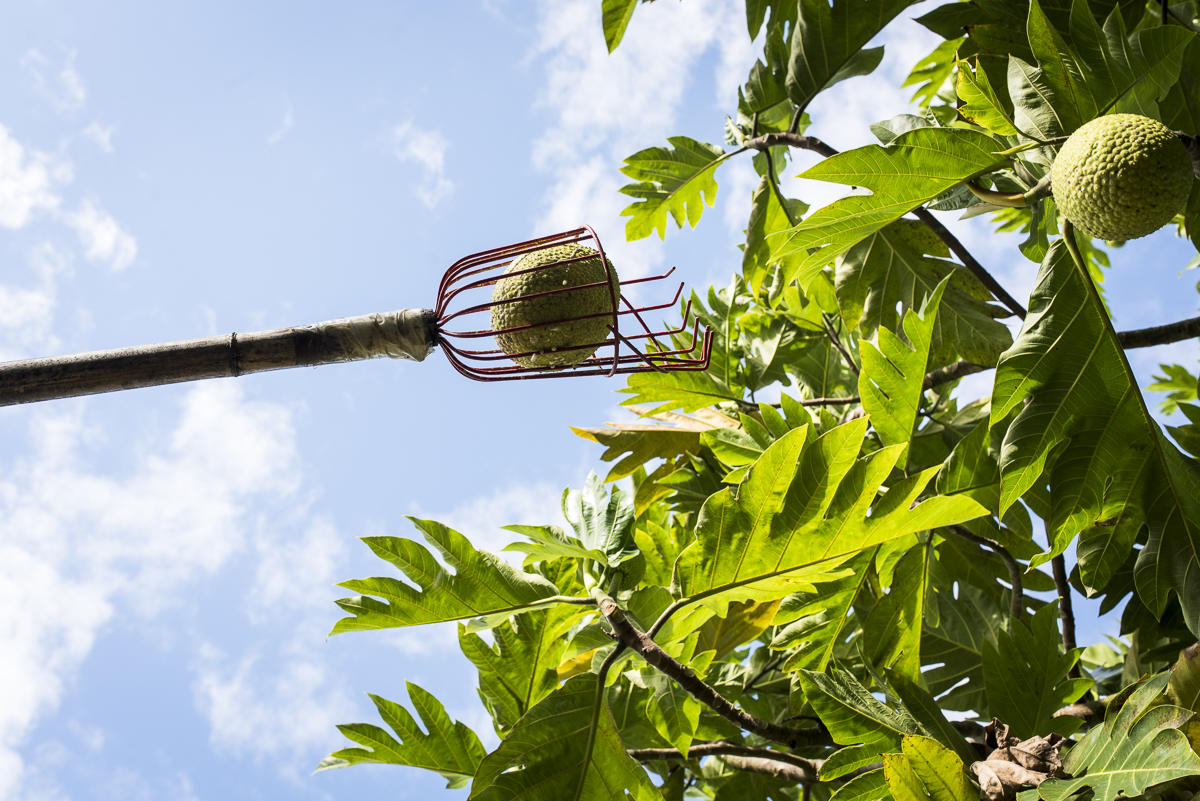Hawai'i ‘Ulu Cooperative is investing in the nutritious indigenous crop as one way to address the islands’ broken food system.

With about 3,850 kilometers to the nearest continent, Hawaii is one of the most isolated island chains in the world. When it comes to feeding its 1.41 million residents, the state spends up to $3 billion a year to import as much as 90 percent of its food. Studies show that the issue isn’t a lack of agricultural land, but rather the fact that the islands grow way more exported commodities, such as coffee, and not enough food to feed the local population. As a result, essential groceries are costly—we’re talking $9 for a loaf of bread—contributing to one in nine people in Hawaii experiencing food insecurity.
Food insecurity was only exacerbated by the pandemic. And with climate change, the islands are facing greater threats from rising temperatures and rising oceans. Something about Hawaii’s food system has to change.
Hawai‘i ‘Ulu Cooperative and other advocates believe the solution can be found in a starchy crop called breadfruit, or ‘ulu in native Hawaiian. While ‘ulu has indigenous roots in Hawaii, the organization says it’s under-utilized, and is pushing to make the fruit a staple in local diets. To do so, it first needs to decolonize Hawaii’s food system to benefit farmers and the greater public alike.
For those unfamiliar, ‘ulu is what Dana Shapiro, a farmer and general manager of Hawaiʻi ‘Ulu Cooperative, describes as “a big tropical tree potato.” Grown on trees, ‘ulu is a round or oval fruit with skin the shade of a tennis ball. The plant thrives in tropical climates, where ‘ulu trees are not only an abundant and perennial producer but resilient to temperature and precipitation swings.
According to the Breadfruit Institute at the National Tropical Botanical Garden, ‘ulu is a complete protein and a good source of complex carbohydrates with other nutrients, such as potassium, Vitamin C and calcium. ‘Ulu can be cooked any way a potato can—think chips, fries or mash. It can also be dried and ground into a gluten-free flour. In Hawaii, it’s commonly pounded into a poi-like paste. Once ripe, its flesh softens like a sweet custard and can be eaten raw for dessert.

Photo by Ronit Fahl.
For at least 800 years, ‘ulu has been woven into the cultural fabric of Hawaii. For instance, there’s the moʻolelo (story, legend) of Kū, the Hawaiian god of war and prosperity, who turned himself into an ‘ulu tree to save his family during a grave famine. Ancient Hawaiians had ‘ulu groves in South Kona on Hawaii Island and ate the fruit with kalo (taro) and mai’a (banana or plantains) as staple carbs in their diet.
With European contact came diseases that wiped out Hawaii’s Indigenous population and its culture. This included their labor-intensive agricultural systems. The traditional Hawaiian food system collapsed largely because of this, Shapiro says. As westernization intensified, imported staples like wheat and rice became the dominant starches and ‘ulu at the market became rare. In the 1970s, activists and advocates spurred a cultural renaissance, with the revival of traditional crops being a central component.
Shapiro, an expert in cooperatives who is originally from Israel, saw the next step to be commercialization. In 2016, she and her husband Noa Lincoln, a University of Hawaii professor who researches indigenous crops in the College of Tropical Agriculture and Human Resources (CTAHR) department, founded the Hawaiʻi ‘Ulu Cooperative with eight other small farms. Together they are trying to collaborate and create a market that would get ‘ulu on more plates. “By building it as a farmer co-op, we’re ensuring that the farmers are forever going to be in control and I believe that’s important in developing the industry,” Shapiro says.

Photo by Ronit Fahl.
Now into their fifth year, the cooperative has grown rapidly to encompass 110 farmers. Pre-pandemic, the co-op sold to hotels like the Four Seasons Resort Hualalai on Hawaii Island and 256 public schools statewide. At its factory on Hawaii Island, the cooperative creates and sells products like ‘ulu flour, hummus and packaged frozen ‘ulu chunks that just need to be warmed up.
Andrew Trump (no relation to the former president) is a second-generation farmer for Island Harvest Hawaiʻi, an organic farm specializing in macadamia nuts located in Kohala on Hawaii Island. “We want to contribute to the local economy as a small business and small farm, plus be a part of revitalizing a food system in a way that acknowledges the past and pays homage to what Native Hawaiians have been doing for centuries,” Trump says. The farm now has a few hundred ‘ulu trees, some of which have died from wild pig debarking, but the trees that remain are just beginning to bear their first fruits.
Trump adds that the cooperative is a pilot program that could help change Hawaii’s food system. “If more organizations, more farmers and more people succeed and show that we can do this, it just adds to the momentum, eventually creating a food system that’s not just about consuming local foods, but also about sustaining local farmers, protecting local land from development and acknowledging the value of indigenous practices,” he says.

Photo by Ronit Fahl.
Farming ‘ulu in groves like ancient Hawaiians did is known as agroforestry. This has a wide variety of benefits for the planet such as carbon sequestration, improved soil, better watershed conditions and water use efficiency.
There’s still a long road ahead for Hawai‘i ‘Ulu Cooperative. Although the co-op is close to turning a profit, ‘ulu farming on a scale is still nascent. Grant funding and research haven’t always focused on indigenous crops like ‘ulu, and the farmers partnering with Lincoln at the University of Hawaii are figuring out challenges as they go, like fertilization and diversification.
“A lot of really basic questions have just not been answered,” Lincoln says. “Hundreds of crops in the tropics aren’t well-utilized because it’s the European history of agriculture, globally. I hope Hawaii can serve as an example of what real local food security and resilience looks like and that’s increasingly important for the world.”
“A lot of really basic questions have just not been answered,” Lincoln says. “Hundreds of crops in the tropics aren’t well-utilized because it’s the European history of agriculture, globally…” Is he referring to plantation farming? Or, large scale monocropping in general? “First evidence of farming in Mideast 23,000 years ago” https://www.sciencedaily.com/releases/2015/07/150722144709.htm